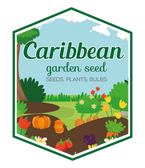
Sunflower Seeds - Lemon Queen (Helianthus annuus,) Heirloom, Flower Seeds
- Get free shipping to lower 48 states on orders $54.95+ (Most Items), excluding live plants, plant bulbs, and black plastic nursery crate.
- Most orders are processed by the next day
- Select your desired size and/or color from the available options.
Sunflower Lemon Queen (Helianthus Annuus Lemon Queen) - Lemon Queen Helianthus is excellent for attracting birds, butterflies, and lots of attention! Grown from Lemon Queen Sunflower seeds, this impressive annual produces a central stalk and blooms up to 12 inches and then produces several side shoots each with their own lemon yellow blooms. Sunflower Lemon Queen gets between 60 - 72 inches tall and will produce blooms in about 100 days after sowing the Sunflower seeds.
Grow Lemon Queen Sunflowers in a sunny location in somewhat fertile well-drained soil. Keep soil weed free and moderately moist while plants are young. Once established, Sunflower plants are somewhat drought and heat tolerant. They will flower mid-summer through fall.
After danger of frost has passed, directly sow Lemon Queen Sunflower seeds into prepared seed beds that are weed free and the soil has been loosened. Space the Sunflower seeds 6 inches apart, cover the seed 1 - 1/2 inch deep, and thin the Sunflower seedlings to 12 - 18 inches apart. Fertilizer should coincide with plants needs. If needed apply fertilizer at a rate of 2 - 2 1/2 lbs of actual nitrogen per 1,000 square feet as a side dressing before the plants reach 12 inches in height.
- Annual flowers
- Sturdy plants grow to 10 feet tall
- Flowers are a soft yellow with dark brown centers
- 75 days
Planting
Sunflowers grow best in locations with full sun; they prefer long, hot summers to flower well.
Though they're not too fussy, sunflowers thrive in slightly acidic to somewhat alkaline (pH 6.0 to 7.5).
If possible, put seeds in a spot that is sheltered from strong winds, perhaps along a fence or near a building.
Planting Sunflower Seeds
It's easiest to sow seeds directly into the soil after the danger of spring frost is past. Ideally, the soil temperature has reached 55 to 60 degrees F.
Plant the large seeds no more than 1 inch deep and 4 to 6 inches apart in well-dug, loose soil after it has thoroughly warmed, from mid-April to late May.
A light application of fertilizer mixed in at planting time will encourage strong root growth to protect them from blowing over in the wind.
Experiment with plantings staggered over 5 to 6 weeks to keep enjoying continuous blooms.
Give plants plenty of room, especially for low-growing varieties that will branch out. Make rows about 30 inches apart. (For very small varieties, plant closer together.)
When the plants are six inches high, thin them to two feet.
If you see birds scratching around for the seeds, spread netting over the planted area until seeds germinate.
Care
Water plants deeply but infrequently to encourage deep rooting.
Feed plants only sparingly; overfertilization can cause stems to break in the fall.
Tall species and cultivars require support. Bamboo stakes are a good choice for any plant that has a strong, single stem and needs support for a short period of time.
Pests
Birds and squirrels will show interest in the seeds. if you plan to use the seeds, deter critters with barrier devices. As seed heads mature and flowers droop, you can cover each one with white polyspun garden fleece.
If you have deer, keep them at bay with a tall wire barrier.
Sunflowers are relatively insect-free. A small gray moth sometimes lays its eggs in the blossoms. Pick the worms from the plants; if you have an infestation, spray with Bt.
Downy mildew, rust, and powdery mildew can also affect the plants. If fungal diseases are spotted early, spray with a general garden fungicide.
Harvest/Storage
To harvest seeds, keep an eye out for ripeness. They're ready when the bracts begin to dry. Hang the heads upside down until they're thoroughly dry in a place that's safe from birds and mice.
For indoor bouquets, cut the main stem before its flower bud has a chance to open to encourage side blooms. Cut stems early in the morning, when the buds first start showing color and are just beginning to open.
Arrange sunflowers in tall containers that provide good support for their heavy heads, and change the water every day to keep them fresh.
Parts used:
Seeds, leaves, root
Useful components:
Vitamin A and E, tannins, inulin, levulin, magnesium, selenium, B-1, B-5, phosphorous, tryptophan, copper, B-6, manganese, folate, fiber, iron and zinc, amino acids and Omega-3 Fatty Acids
Medicinal use:
Sunflower seeds are considered to have antioxidant, anti-inflammatory, diuretic and expectorant properties. They can help reducing the symptoms of asthma, osteoarthritis and rheumatoid arthritis and help in cases of bronchial, pulmonary and laryngeal problems. They can be applied as an addition to therapy of colon cancer, high blood pressure and migraine headaches. Due to their magnesium content, Sunflower seeds can also act as prevention against heart attacks and strokes. Sunflower leaves can be used as an infusion to treat high fevers, lung problems and diarrhea. As a poultice, Sunflower root is used against snake and spider bites.
Safety: Some people are allergic to sunflower foliage, and may react with a skin rash. Some herbs could react with certain medication. Therefore, it is highly advisable to consult your doctor before consumption of any herb.
Select your desired size and color from the available option
LET OUR CUSTOMER SPEAK FOR US

![[Seeds] - Caribbeangardenseed](http://caribbeangardenseed.com/cdn/shop/files/gift-card-gift-card-1_1024x1024_dfa857db-9150-4315-a362-7f0bb3fb9c47_60x28.png?v=1722895789)








